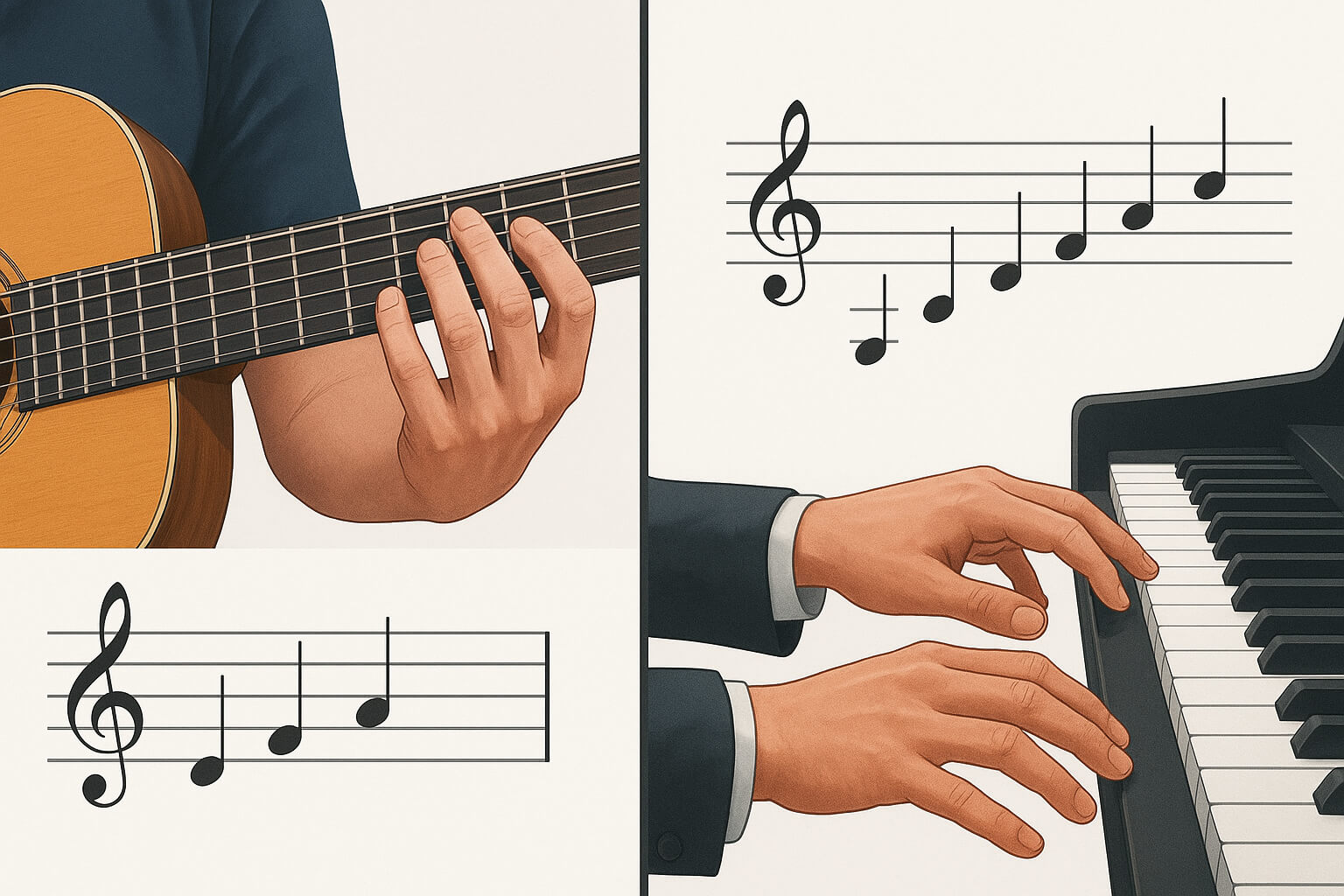August 18, 2025

If you’ve ever picked up a guitar, sat at a piano, or explored music theory, you’ve likely come across the terms chord and arpeggio. While they’re closely related, they’re not the same thing. Understanding the difference is essential for beginners and can open up creative possibilities for your playing and songwriting.
Both concepts are fundamental to how music works—but they create very different effects, feel different to play, and serve different roles in compositions and performances. Let's explore what sets them apart and how you can use both in your musical journey.
A chord is a group of notes—typically three or more—that are played at the same time. When played together, these notes create a sense of harmony. The most basic chord structure is called a triad, which is built using three key ingredients:
For example, when you play a C major chord, you’re playing the notes C (root), E (major third), and G (perfect fifth) all at once. This produces a harmonious, unified sound that we recognize as a chord.
On guitar, this usually involves strumming multiple strings together while holding down a chord shape. On piano, it means pressing multiple keys at once.
Chords are central to harmony—they give songs emotional tone, create tension or release, and support the melody.
In nearly every style of music—from pop and rock to jazz and classical—chords act as the backbone of the harmonic structure. They help define the key of a song and provide the emotional mood.
These harmonic choices affect how a listener feels during a song. For example:
To explore how chords shape songs, check out this beginner-friendly guide to guitar chords.
An arpeggio takes the exact same notes as a chord—but instead of playing them all at once, you play them one at a time in a sequence. The word “arpeggio” comes from the Italian arpeggiare, which means “to play like a harp.”
If you imagine how a harpist gently plucks each string, one after another, you’ll understand what an arpeggio sounds like.
Arpeggios use the notes of a chord, but they unfold those notes over time. This creates a sense of melody with harmony implied.
This motion creates a flowing, elegant texture that’s heard in countless styles of music—from classical pieces to rock ballads and jazz improvisation.
For a clear breakdown, here’s a useful piano arpeggio guide.
While chords and arpeggios are built from the same notes, the difference lies in how they are played and how they sound.
You might think of a chord as a snapshot of harmony, like a still image—everything is happening at once. In contrast, an arpeggio is more like a short melody built from a chord, telling a story note by note.
This change in delivery has a big impact on a song’s feel:
Arpeggios are a powerful expressive tool in nearly every musical style. While chords give you the harmonic “canvas” of a piece, arpeggios allow you to paint with individual notes, adding motion and interest.
Mastering arpeggios helps you move beyond just strumming or comping chords—it lets you create expressive, lyrical lines that still reflect the harmony of the song.
Here’s a great article on using arpeggios in guitar solos.
If you’re just starting out, it’s smart to approach chords and arpeggios as complementary tools. Each one strengthens different aspects of your playing:
Helpful beginner tools:
These resources offer structured approaches to learning both chords and arpeggios, even if you’ve never played an instrument before.
Chords and arpeggios are two ways of expressing the same musical idea—harmony. But they do it in completely different ways.
Both are crucial for building a strong foundation in music. Whether you’re strumming a song, composing your own piece, improvising a solo, or arranging for others, understanding when to use chords vs. arpeggios will help you bring more life and color to your music.
The best part? You don’t have to choose one over the other. The most expressive players and writers know how to blend both—creating songs and performances that feel alive, varied, and emotionally powerful.
Stay up to date with the latest tips, expert insights, product reviews, and step-by-step guides to help you grow, create, and succeed—no matter your industry or passion.